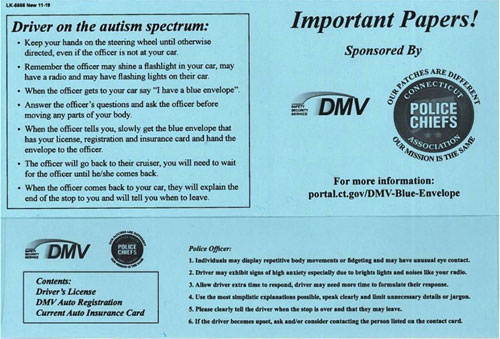According to Psychology Today, people with autism “are seven times more likely to encounter police” than their neurotypical peers. In fact, “about 20% will be stopped and questioned, and 5% will be arrested by age 21.”
Even more shocking: A white paper by the Ruderman Foundation revealed that between one-third to one-half of people killed by police officers are disabled. Why so many? Because police officers may not recognize the signs of autism.
“What makes interactions with law enforcement so potentially dangerous for the autistic population is that some autistic behaviors look suspicious or even defiant,” says Psychology Today. Not answering questions, looking away, stimming, or echolalia (repeating words back) may draw attention and potentially trigger an officer trained to dominate and control a situation.”
This is particularly problematic when neurodiverse drivers are stopped by police. “The sensory storm of loud sirens, lights, and authoritative behavior can agitate autistic people and increase their dysregulation. Autistic people may also have difficulty understanding verbal directions and thus may not be able to execute instructions,” according to the magazine.
An initiative called “The Blue Envelope Program” aims to prevent dangerous interactions during traffic stops. First piloted in the State of Connecticut in 2020, the program has grown to include Arizona, New Jersey, New York, Maine, Massachusetts, California and—just last month—Mississippi.
The Blue Envelope Program is easy to implement. Neurodiverse drivers can request a blue envelope from their local law enforcement agency. Into the envelope, drivers place relevant documents including their license, registration and insurance card. They can also add information that identifies them as a person with autism and describes their triggers. Likewise, they can include information about their neurodiverse child or adult passenger.
In the event that they are stopped by police, showing the officer the blue envelope will alert them to the fact that the driver or passenger has autism. Armed with this knowledge, the officer is more likely to handle the interaction with sensitivity, and less likely to jump to conclusions about the driver or passenger’s behavior.
In the best case scenario, police officers receive education about neurodiversity, and training in how best to handle interactions with neurodiverse individuals. Fortunately, police departments are increasingly offering such training. With higher and higher numbers of people being diagnosed with autism—latest CDC statistics indicate that one in 36 children are on the autism spectrum—this trend could not come soon enough.


